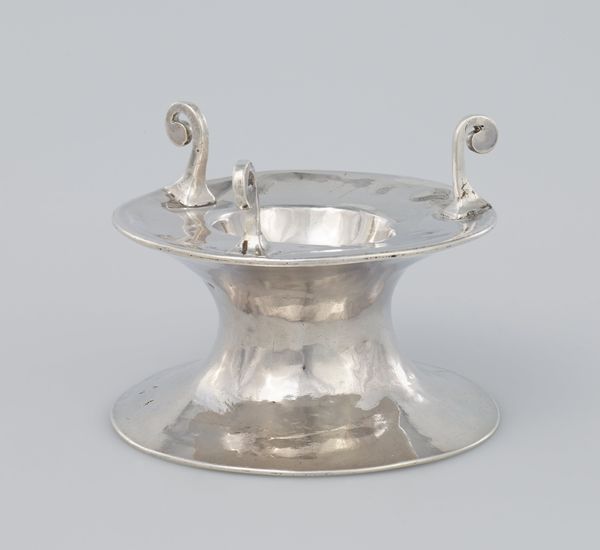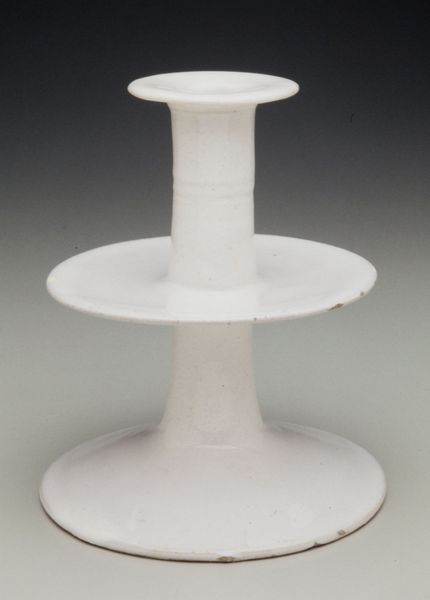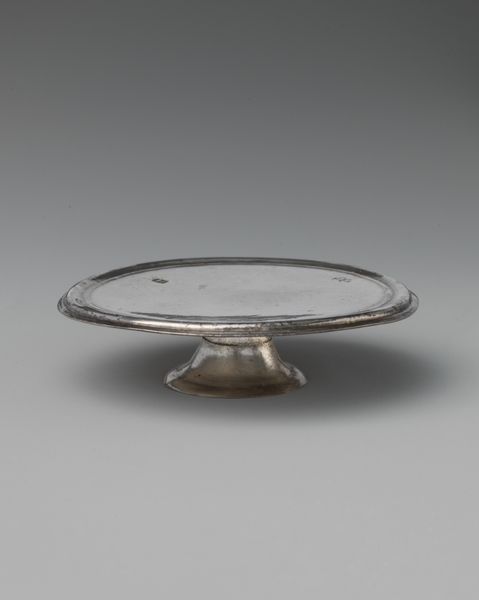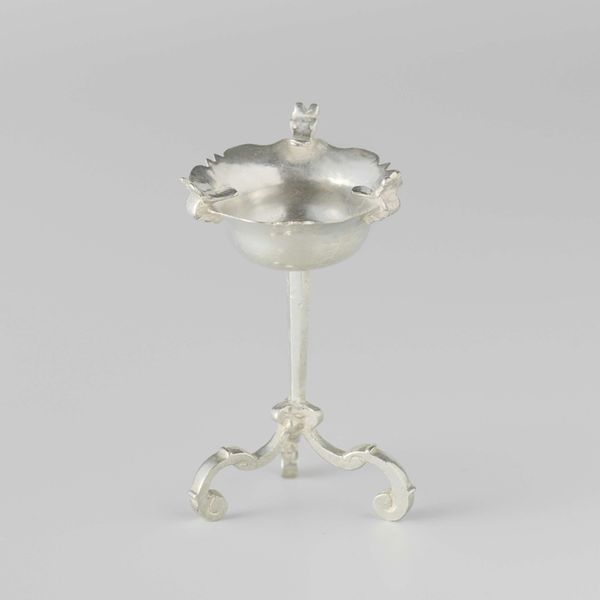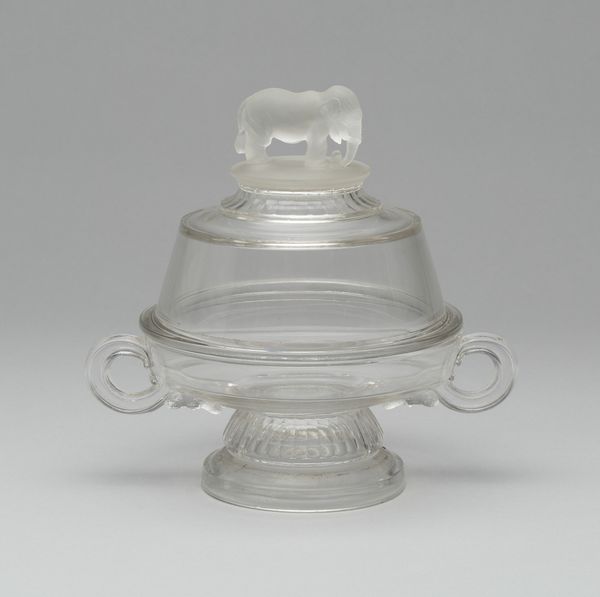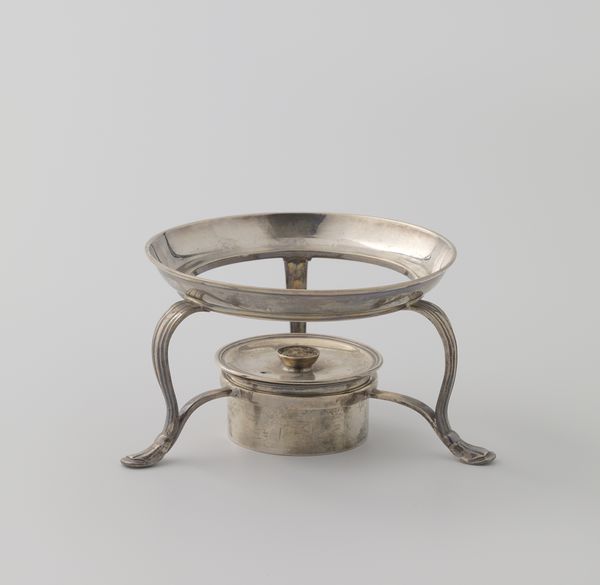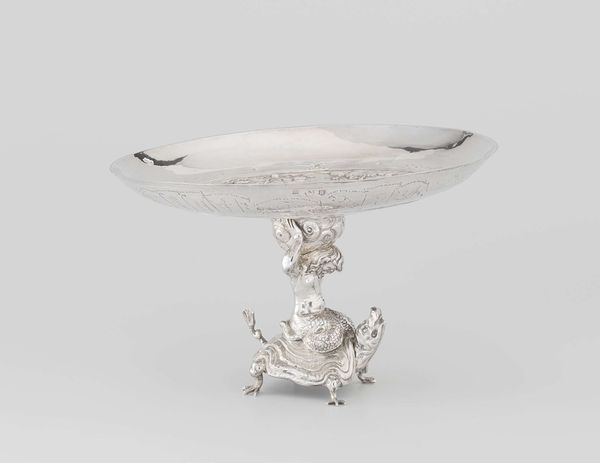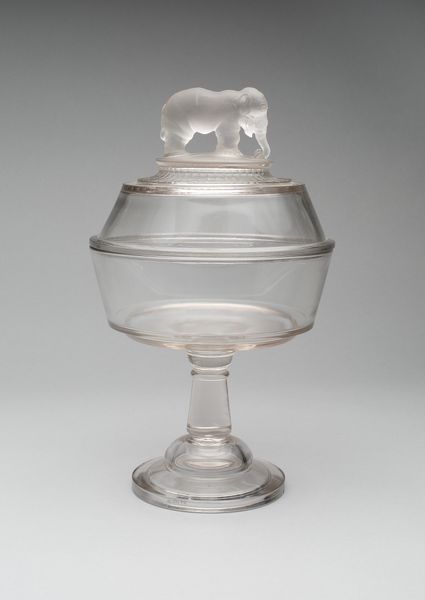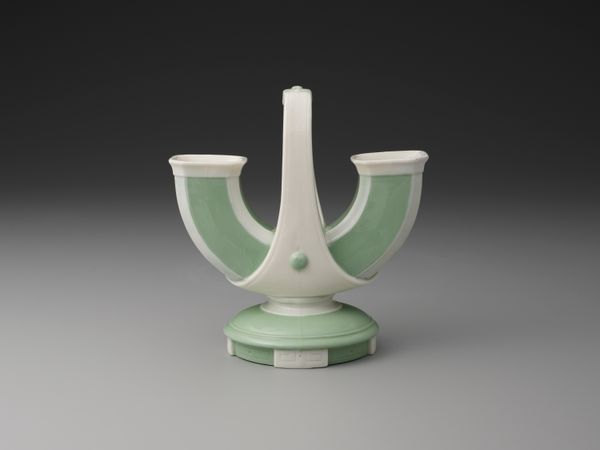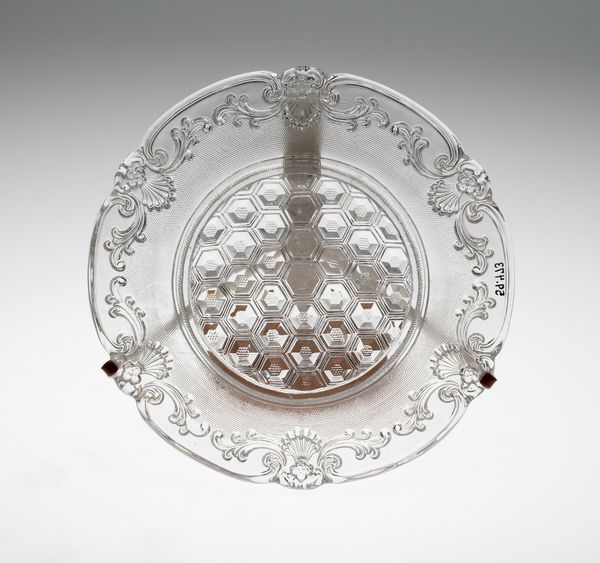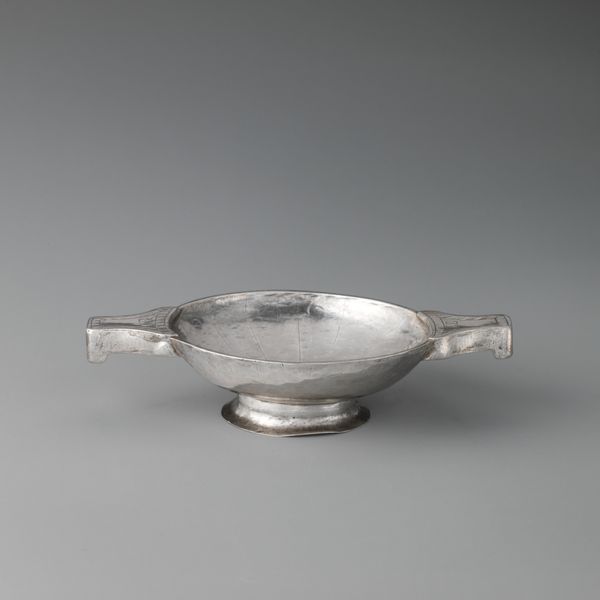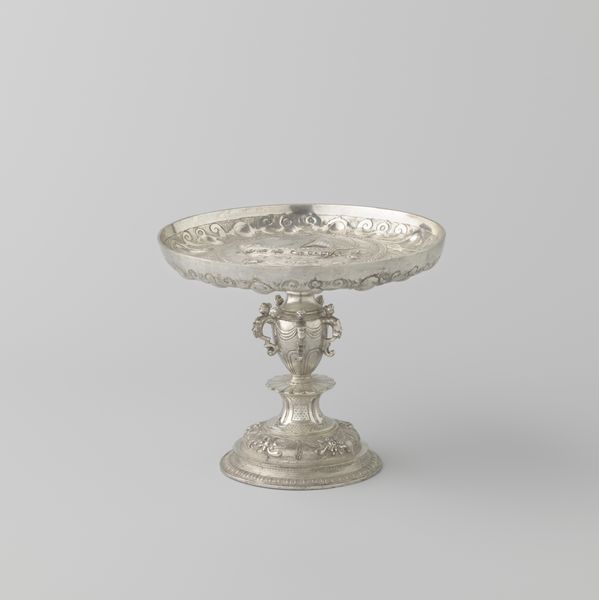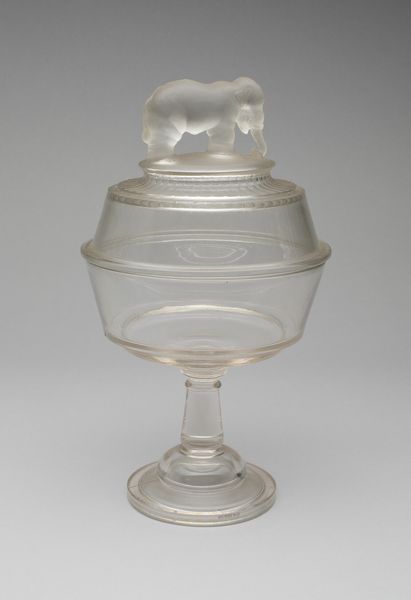
ceramic
#
baroque
#
ceramic
#
ceramic
Dimensions: 4 1/4 x 5 x 5 in. (10.8 x 12.7 x 12.7 cm)
Copyright: Public Domain
This footed salt cellar was made by an anonymous maker out of white salt-glazed stoneware. In earlier times, salt was a luxury item, not just a ubiquitous seasoning. As such, the presentation of salt was a mark of wealth, taste, and social standing. Salt cellars like this one, from the 18th century, became status symbols in Europe and the American colonies. Their design often echoed architectural forms or drew inspiration from classical motifs, elevating the everyday act of seasoning to a ritual of refinement. The scrolled handles might also have been derived from contemporary furniture design. Note the elevated bowl, making it easier for diners to access the precious condiment with their knives, or to take a pinch with their fingers. Such artifacts are often featured in period paintings and literature, which when studied closely, reveal the values and norms that influenced tastes in the past. By studying salt cellars, their forms, and their settings, we can understand how cultural ideas are reflected in the material world.
Comments
No comments
Be the first to comment and join the conversation on the ultimate creative platform.
